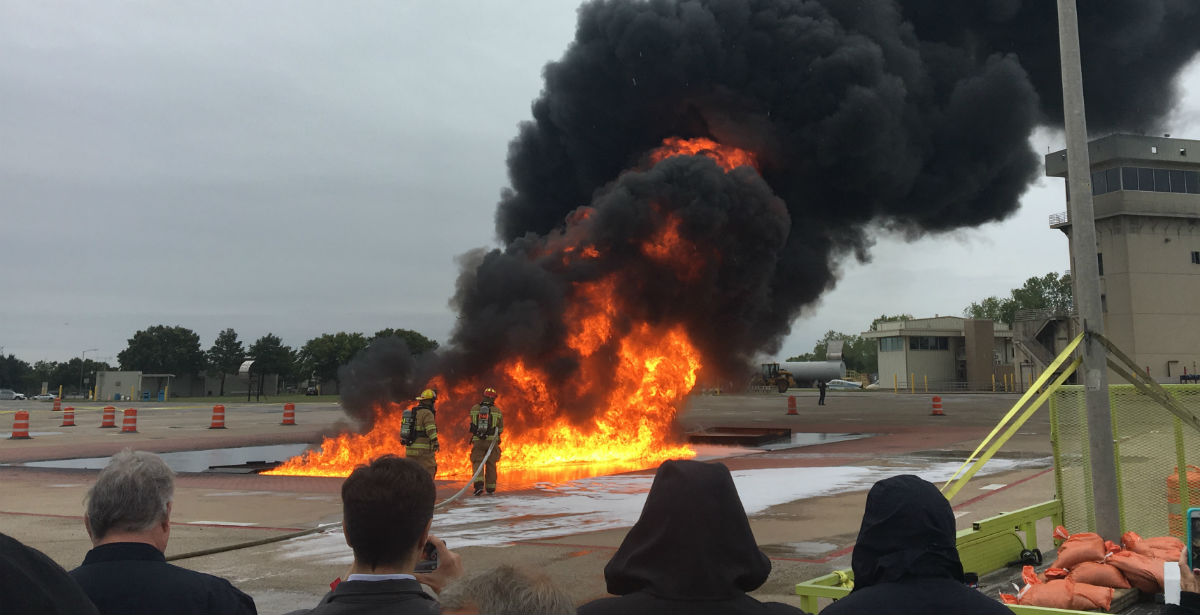Toxic-Free Future’s Science Director, Erika Schreder, recently traveled to a conference in Dallas to gain more expertise on firefighting foams. She wanted to find out how well PFAS-free foams perform as we work with airports and refineries to stop the use of PFAS-containing foams. This research is critical as states and the Federal Aviation Administration consider restrictions on PFAS containing foams.
Specific fire tests were performed at the conference and the results have just been released. The PFAS-free foam demonstrated excellent performance in extinguishing large-scale fuel fires. LASTFIRE, a consortium of international oil companies, conducted the series of tests in collaboration with the DFW Fire Training Research Center at the Dallas/Fort Worth International airport.
LASTFIRE has conducted tests of firefighting foams, and these latest tests are part of what the consortium calls “the most comprehensive programme of foam testing driven and managed by end users for more than 35 years.” Data on the actual fire-extinguishing performance of foams on the market can be difficult for end users (e.g. refineries, airports, chemical plants) to obtain. LASTFIRE has now partnered with the Dallas-Fort Worth Fire Research and Training Center to fill that gap.
At the Dallas/Fort Worth testing, firefighters and researchers asked the question: what is the performance of fluorine-free foam in larger fuel fires?
To answer the question, LASTFIRE performed tests in large pans of fuel, 40 meters and 30 meters long. They compared the standard application rate and equipment with a lower rate combined with a compressed air application method known as CAF.
The fluorine-free foam performed “exceptionally well” with both application rates and methods, with extinguishment to 30 meters achieved in 2 minutes, 32 seconds with standard application and 2 minutes, 23 seconds with the compressed-air application. The tests also showed that extinguishment was possible over at least 40 meters.
The researchers concluded:
“It is clear from these results that this particular fluorine-free foam was very effective in these tests, especially when applied as a CAF based foam.”
A copy of the press release is available here.
The research program will continue in spring 2019 with tests involving alternate fuels, seeking to optimize foam properties.
Implications for States, FAA, and Foam Users
Earlier this year, Washington State became the first state to restrict the use of PFAS-containing foams. This law, supported by the Washington Council of Fire Fighters, Washington Fire Chiefs and many others, largely phases out PFAS firefighting foam to protect drinking water and the health of firefighters. Other states are considering similar restrictions and Congress recently directed the Federal Aviation Administration (FAA) to allow airports to use PFAS-free foams. The recent tests provide even more evidence on the high performance of PFAS-free foam. All users, including refineries and airports, should be using PFAS-free foams.




